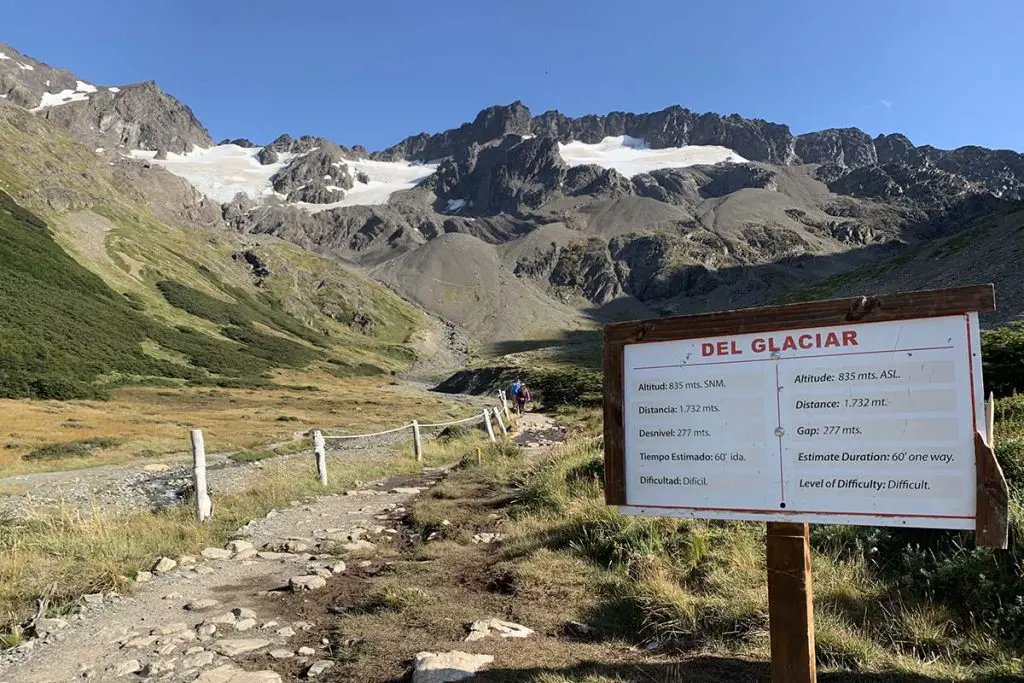Compensated links are contained in this post. If you purchase through these links, I earn a small commission! The words in this article are not intended to replace medical advice. Please read my disclaimer for more info.
Do I really need a knee brace? I think so! Read on to hear why.
When I was growing up, I competed regularly in athletics. My events were the race walk and long-distance running. I carried the running with me through to being an adult. I have rarely gotten injured, let alone had any ongoing knee problems.
So you can imagine my surprise when my knee joint started hurting while I was completing the long hike that is the Annapurna Base Camp Trek.
The downhill hiking on the way back from the base camp area gave me sore knees. The last couple of days made my knees feel pretty tender.
Later this year, when I go back to complete one of the more challenging hikes, the Everest Base Camp Trek via Gokyo lakes, I will be wearing the best knee support I can find.
Suppose you have chronic knee pain, other knee injuries or a medical condition. In that case, it’s always best to consult with a doctor for medical advice or a physical therapist before attempting rigorous outdoor activities such as hiking for long distances.
However, if you are looking for simple, good knee support as a preventative measure against hiker’s knee and minor aches, then keep reading.
Table of Contents
What is a knee brace?
A quality knee brace is a tool that provides extra support by adjusting the way your knees carry your body weight and relieves the pressure placed on your knees.
There are a few different types of knee braces, and this article will try to examine the different types to help you find the best type of brace for you.
When to use a knee brace?
There are various reasons you may consider a knee brace for your next hike. Age and continual usage can contribute to knee injuries.
Some of the most common causes of knee and joint pain include:
- Sprained or strained ligaments and muscles. These are the types of injuries that occur if you accidentally land incorrectly on rough terrain and twist your knee. This damage can become a serious knee injury.
- Torn cartilage, which can occur with severe sprains, sometimes requires knee surgery to fix.
- Tendonitis is an overuse injury. This type of injury occurs in hikers due to the repetitive nature of longer hikers (hiker’s knee). Damage to the patellar tendon is called jumper’s knee.
- Arthritis, both osteoarthritis and rheumatoid arthritis, can cause joint pain in the knees.
If you have any serious injuries or conditions, please get medical advice before deciding which product is best for you.
The dodgy bad knee can be such a pain, even on day hikes, so a good knee brace that offers additional support can be a godsend. Hiking can place pressure on the patella tendon, which causes pain in the knee cap. I plan to use a hiking knee brace from now on, even in training.

Tips for choosing a knee brace
Size
Braces come in different sizes, so it’s essential to make sure you get the perfect fit for you. An excellent fitting brace will ensure it is working correctly and as intended. If the brace doesn’t fit well, it may be of little help or make your knee feel worse.
To achieve a good fit, you will need to know the measurements of your leg. Measuring approximately 15cm above and below your knee will help you ensure you order the right size. You want your knee brace to feel firm and snug around your leg, but you don’t want it to feel constrictive.
Type
The type of knee brace you choose will ultimately depend on the kind of pain relief you are hoping to get from the additional support provided by the brace. Different types include:
- Knee sleeve
- Knee strap
- Hinged knee brace
- Open patella brace
- Closed patella brace
I will provide more detail on each of these types of braces in the list of the best knee braces below.

10 top knee braces
Knee sleeve
A knee sleeve offers great support during hiking. A sleeve applies compressive forces on your knee, which causes greater blood flow to the area, assisting in the reduction of pain during physical activities.
A sleeve differs from a knee brace in very important ways. A sleeve is not designed to provide the patella and anterior knee support that a brace does. It is designed to provide warmth and a reduction in patella movement, as well as quicker recovery times due to the compression.
Incrediwear Knee Sleeve
This knee sleeve is a perfect choice if you have osteoarthritis, ligament injuries, tendonitis, sprains and joint pain. This sleeve aids in increasing blood circulation to help reduce inflammation and relieve pain.
It is made from a high-quality moisture-wicking breathable material of lycra nylon, and it is form fitting. The compression assists the healing process during and after physical activity.
This sleeve is a great option for avid hikers who are in need of a moderate support tool for their knees.
Powerlix knee compression sleeve
The Powerlix knee compression sleeve is a high quality sleeve designed to give you the support you need when hiking.
If you’re out on the trails for a long time each day, this sleeve will assist in injury prevention by providing warmth and compression to your knees.
Compression knee brace with side stabilizer
If you need more lateral support, then a knee brace with a side stabilizer may be what you need.
ACE Compression Knee Brace with Side Stabilizer
This sleeve assists in supporting a full range of motion while simultaneously providing lateral support to the knee. It is designed to be low profile and snug against your knee and made from durable materials that have four-way stretch. This sleeve is comfortable and supportive.
Knee strap
Knee straps are a simple yet very effective way to support your knee. The way a knee strap works is it applies pressure to the patella tendon. This tendon connects your tibia to your knee cap, and the use of a knee strap ensures the tendon is in good alignment with your knee. Thus, reducing the strain placed on your knee during times of repetitive movement.
Achiou Knee Strap
Small but mighty, this knee strap will help you avoid hiker’s and runner’s knee injuries. Made from nylon, this strap is sized at one-size-fits-most, so there’s no worry about getting the incorrect size.
This strap is ideal for relieving patella tendonitis and for simply supporting your knees while you tackle the longer distances on the trail.
Patella stabilizer knee strap
A patella stabilizing knee strap can aid in injury recovery as it provides optimal support in the patella region. It can also assist in the prevention of injuries associated with hiking by providing stabilization while walking.
Patella Stabilizer Knee Strap
This knee brace is more expensive than some of the others, but it is made from 100% cotton, providing a breathable fabric for long-wearing use.
This design has adjustable straps that provide a locking mechanism, giving you full control over the compression. This brace also has lateral support, perfect for people with patella instability.
Hinged knee brace
A hinged knee brace assists in supporting the knee and keeping it knee stable. This type of design is helpful for people who have weak knees or minor injuries. A hinged knee brace can support the knee and surrounding soft tissues and prevent further injuries. As a knee support, this is one of the best braces you can buy as it’s such an all-rounder.
Hinged knee brace support
This hinged knee brace is as supportive as they come. With velcro straps to ensure the perfect fit and compression, you will feel pain relief as soon as you put it on.
This brace is designed to be worn all day, so it’s been made with your comfort in mind. These are designed to be worn while active, so they’ll work perfectly on your next hike.
Open patella brace
The open patella design means that the patella (knee cap) is uncovered. The benefit of this type of brace is that it supports your knee cap and ensures that it stays in proper alignment. This design relieves a lot of pressure from the patella and the design is considered to be suitable for wearing for long periods of physical activity.
Open patella knee brace
This knee brace is one of the best products for a moderate kind of knee pain. One of the important factors in how well it works is the support it is able to give to stabilizing the patella.
This brace is made from neoprene so it will be easy to wash and keep clean. The open patella knee brace comes in a range of sizes for the perfect fit. It can also be worn as a left or right knee brace, making it very versatile.
Open patella knee brace
This knee brace is slightly different from the one above as it provides removable support hinges, making it a very versatile open knee brace.
This brace also helps to keep the warmth in to assist in reducing pain and inflammation. It is made from a lightweight neoprene blend which makes it breathable.
Closed patella brace
A closed patella design is not open at the patella. They provide more all-round support for the knee.
Closed patella sleeve with straps
The closed patella compression sleeve comes at a low price, so you get great bang for your buck. The sleeve has anti slip silicone strips to keep it perfectly in place. It also has a strap to provide the right amount of compression for your needs.
The sleeve is made from nylon which makes it easy to wash and keep clean. The material is moisture-wicking to keep you more comfortable as you hike.
Knee brace with hot and cold therapy
We all know the healing effects of hot and cold therapy, so a knee brace that incorporates this therapy is good news for those of us with sore knees.
Compression Sleeve with Hot & Cold Ice Pack
Not only does this compressive sleeve support your knees while hiking, but it also offers the ability to add hot and cold packs to assist in relieving knee pain.
Even as just a compression sleeve, this knee brace will reduce the pressure on your knees and provide support where you need it most.
Tips for a pain-free hike
In addition to the knee braces above, there are many things that you can do during your walk to help reduce or minimise pain. If you do experience significant pain, stop and seek medical advice. Don’t keep pushing through as you may end up injuring yourself even more.
Backpack weight
An important thing to remember is the weight of your body plus the weight of your backpack is contributing to the forces placed on your knees and lower legs. How much weight you carry is important because it all adds up. Make sure you are only carrying what you need for the day.
Feet and shoes
The shoes you wear are vitally important to providing your body with a good, stable base on which to walk. If the ground is uneven and the terrain is rough it is even more vital to have decent shoes or boots.
Be wary of loose rocks and slippery terrain also, these are knee injuries waiting to happen. Be mindful of where you place your feet, not that I want you to keep your eyes on the ground and not look up and see the beauty of your surroundings! But sometimes, it’s the unfortunate part of hiking that you need to keep your eyes on the ground.
Hiking poles
I am a massive fan of hiking poles. I’ve been on numerous hikes where I’ve ended up giving one pole to the person I am with because they didn’t bring any. Hiking poles assist to relieve the pressure off your legs and especially your knees. They are fantastic for providing stability while going downhill. Downhill is the worst for knee pain while hiking, so ensure you are doing all you can to minimise the impact on your body.
Strengthening your knees
It’s not all doom and gloom for your knees. There are some strengthening exercises that you can do to build up your strength and flexibility to help support your knees. OrthoInfo has a list of 12 exercises as part of a knee conditioning program that you can do.
The program targets specific muscle groups that will help reduce the stress placed on your knees as you go about your everyday activities. Remember, it’s not just your knee, but it’s the surrounding muscles and tendons that keep your knee happy and pain-free.
The following exercises should be done for at least 4-6 weeks:
- Heel cord stretch
- Standing Quadriceps Stretch
- Supine Hamstring Stretch
- Half Squats
- Hamstring Curls
- Calf Raises
- Leg Extensions
- Straight-Leg Raises
- Straight-Leg Raises (Prone)
- Hip Abduction
- Hip Adduction
- Leg Presses
As always, check with a medical professional before starting anything new.

Final thoughts
A proper knee brace will make hiking much more enjoyable if you suffer from knee pain. It will also provide support to your knee cap and associated muscles to reduce the risk of injury.
I can’t wait to get to Nepal later this year. It’s one of my favourite places to hike for numerous reasons. The scenery is stunning, the people are friendly, and the food is amazing. The ups and downs of the hikes in Nepal are hard on the body, though, and that’s why I’ll be looking to wear knee braces as a preventative measure. I want my hike to be as pleasant as I can, so I don’t want any knee pain!
Related articles you may enjoy
Annapurna Base Camp Trek packing list
Annapurna Base Camp Trek vlogs
Mt Kosciuszko Summit Walk Australia
Pin this article for later












